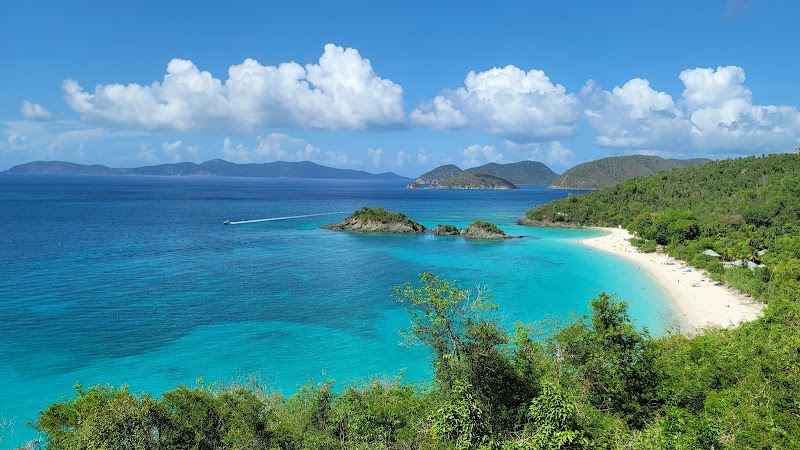Top Coastal Kayaking Adventures Around St. John: Discover Hidden Wildlife and Secluded Bays
Explore St. John’s coastal waters where secret bays invite kayakers to uncover vibrant marine life and tranquil shores far from crowds. This guide balances thrilling paddling with practical advice to ensure your trip is both memorable and safe.
Choose a Stable Kayak
Select kayaks designed for coastal water with good balance to handle changing waves and possible rocky landings safely.
Start Early for Calm Waters
Set out before 9 AM to avoid stronger afternoon winds and enjoy clearer visibility for spotting wildlife.
Bring Waterproof Gear
Use dry bags for phones, snacks, and extra layers to protect from salt spray and unexpected splashes.
Respect Wildlife and Environment
Avoid touching coral or disturbing animal habitats; maintain a respectful distance from nesting birds and marine creatures.
Top Coastal Kayaking Adventures Around St. John: Discover Hidden Wildlife and Secluded Bays
St. John’s coastline challenges and invites you, its currents pushing forward while the turquoise waves cradle your kayak in confident motion. Here, coastal paddling isn’t just a pastime—it’s a pursuit of raw, immediate connection to a landscape fiercely itself. St. John, part of the U.S. Virgin Islands, offers a rare blend: accessible waters framed by steep forested slopes, punctuated by secret bays where wildlife peeks out from rocky coves or lush mangroves.
Start your journey at Cruz Bay, where rental outfitters equip you with sturdy, stable kayaks. From this hub, the waters open wide to options ranging from gentle paddle routes to more demanding open-sea crossings. Explore Hansen Bay’s sheltered inlet to spot green sea turtles lazily gliding beneath bright coral heads, or venture toward the secluded Ramirez Bay, where iguanas sunbathe on granite boulders and pelicans wheel low on the ocean breeze.
Each route demands awareness. Winds and currents here remember every paddler who dares, often quick to shift and urge you back to shore. Your trip length will vary: a casual 2-mile paddle to a hidden cove or a 5-mile stretch tracing the island’s rugged northeast corner. The shoreline terrain—rocky in spots, soft white sand in others—tells stories of volcanic origins and stark weather. Be ready to land on slick volcanic rock when you seek shade or take a break; good footwear will keep you steady.
Sensory details thrive: the salt air tastes sharp on your lips, the heat nudges your shoulders, and the mangroves whisper as you glide past. Wildlife is both shy and bold; watch for vibrant parrotfish below the waves or the cautious nodding of mongoose heads on distant cliffs. Timing your paddle for early morning gives you calmer waters and softer light—perfect to absorb a quiet bay and the calls of seabirds waking.
Preparation is key: always pack hydration and sun protection. The island’s sun can feel relentless, even when clouds drift by. A waterproof dry bag will guard essentials while keeping your focus on the adventure. Respect the environment—poke no coral, let the fauna be. By matching your pace with the sea’s rhythm, you’ll find a pace both challenging and rewarding, forging a connection with a landscape that resists easy mastery but offers its secrets to those who listen.
Whether you’re seeking an easy glide over mirror-like water or a spirited journey along wind-driven swells, St. John’s coastal kayaking routes deliver. It’s an experience grounded in practical readiness, heightened awareness, and the thrill of discovery, all set against some of the Caribbean’s clearest, most compelling waters.
Nearby Trips
All Adventures
Boat Charters
Water Activities
Adventures near Cruz Bay
Discover the unique and memorable adventures that make Cruz Bay special.
Frequently Asked Questions
Are guided kayak tours available around St. John?
Yes, several local outfitters offer guided tours ranging from beginner-friendly trips to expert-level cross-island expeditions. Guided trips enhance safety and provide insights into the area's ecology and history.
What wildlife might I see during a kayaking trip here?
Expect to encounter green sea turtles, colorful parrotfish, mangrove crabs, occasional dolphins offshore, and various seabirds like brown pelicans and frigatebirds, especially near secluded bays.
Are there places to safely land and take breaks?
Yes, small beaches like Hansen Bay and Ramirez Bay offer soft sand landings suitable for breaks. Rocky landings require careful footing, and some mangrove fringes allow easy exits but watch for sharp roots.
Do I need prior kayaking experience to explore St. John’s coast?
Basic paddling skills are highly recommended, especially for open water segments where currents and wind can intensify. Beginners should consider guided tours or sheltered bay routes.
How should I prepare for changing weather conditions on the water?
Check local forecasts before departure, carry waterproof gear, and start early to avoid afternoon winds. Always inform someone onshore of your route and expected return time.
Is wildlife and environmental protection important during a kayak trip here?
Absolutely. The coral reefs and mangrove habitats are delicate. Maintain distance from animals, avoid touching coral, and do not leave any waste behind to protect this fragile ecosystem.
Recommended Gear
Personal Flotation Device (PFD)
Always wear a well-fitting life vest for safety in shifting coastal conditions.
Waterproof Dry Bag
Keeps gear and electronics safe from splashes and unexpected rain.
Sun Protection Kit (Hat, Sunscreen, UV Shirt)
Vital for shielding skin from the intense Caribbean sun, especially midday.
Water Shoes or Reef Sneakers
Protect feet when landing on sharp coral, slippery rocks, or mangrove roots.
Local Insights
Hidden Gems
- "Secret snorkeling spots near Waterlemon Cay"
- "Unmarked vantage point on Ram Head’s eastern cliffs"
- "Quiet mangrove tunnels near Coral Bay"
Wildlife
- "The rare St. John ground lizard often seen in rocky outcrops"
- "Nesting sites of endangered green sea turtles on remote beaches"
- "Diverse fish species including colorful parrotfish and angelfish in shallow reefs"
History
"St. John’s coastline holds traces of Danish colonial plantations; some ruins remain near the water’s edge, reminding paddlers of the island’s layered past entwined with natural forces."
